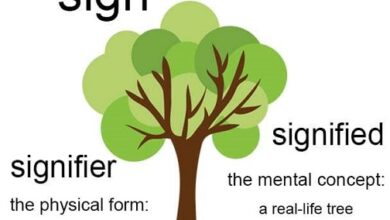Linguistic Anthropology
Linguistic anthropology is the branch of anthropology that applies linguistic methods to anthropological problems, linking the analysis of semiotic and particularly linguistic forms and processes (both on a small and large scale) to the interpretation of socio-cultural processes (also on a small scale). and on a large scale). In North American anthropology, linguistic anthropology is one of the four traditional primary fields, along with archeology, physical or biological anthropology, and sociocultural anthropology.
Conventional Linguistic Anthropology
Conventional linguistic anthropology also has implications for sociology and the self-organization of human communities . For example, a study of the Penan people reveals that they have six different words to say the first person of the nominative plural we / we. This may imply a greater understanding of cooperation, consensus, and consensual decision-making than in Hispanic culture . Anthropological linguistics studies this distinction and relates it to ways of life and adaptations to the senses.
As well as studying the distinction made in languages in relation to the colors of the rainbow , observing the tendency to increase the diversity of terms, as shown by the fact that there are distinctions of bodies in this environment that must be made. Leading to localized knowledge and perhaps localized ethics, the final evidence of which is the different terms used to refer to “us”.
Claude Levi-Strauss , a famous French anthropologist in the 20th century developed a theory known as ” structural anthropology .” Specifically, he used the structural linguistics that Saussure and those who followed him began to develop. At that time in the field of anthropology, the family was the main focus unit of attention. An independent unit consisting of a father, mother, and their children.
The other members of a family such as grandparents, uncles, and cousins were secondary units. But Levi-Strauss rationalized that, according to the structuralism developed by the Prague Linguistic Circleand his idea of the value of linguistics, the members of a family only define their identities according to how they relate to the other members of the extended family. Therefore, instead of analyzing the units as if they were primary or secondary, he analyzed the relationships between all members of a family.
Object of study
Linguistic anthropologists study language in its social and cultural context, in space and over time in order to make inferences about universal characteristics of language , to reconstruct ancient languages, to discover diverse perceptions and patterns of thought. The study of linguistic variation in its social context is called sociolinguistics and allows us to show how speech reflects social differences.
Descriptive linguistics studies the sounds , grammar, and meaning in specific languages. The historical linguistics considers variation in sound, grammar and vocabulary over time.
Three Paradigms
First paradigm: anthropological linguistics
The first paradigm is known as anthropological linguistics. The field focuses on topics unique to this subdiscipline: documenting languages that were then considered doomed to extinction , with a particular focus on the languages of indigenous North American tribes. It is also the most linguistic-oriented paradigm. Topics include:
Grammar description,
Typological classification and
Linguistic relativity
Second Paradigm: Linguistic Anthropology
The second paradigm can be marked by the transition from anthropological linguistics to linguistic anthropology, which indicates the strengthening of the anthropological focus of research. This term was preferred by Dell Himes , who, together with John Gumpertz, was responsible for the idea of the ethnography of communication . The term “linguistic anthropology” reflected Himes’ vision of a future in which language would be studied in the context of the situation and in relation to the speaking community. This new era will require many new technological developments such as mechanical recording.
Hymes made many revolutionary contributions to linguistic anthropology, the first of which was a new unit of analysis . Unlike the first paradigm, which focused on linguistic tools such as measuring phonemes and morphemes , the second paradigm’s unit of analysis was “speech event”.
A speech event is an event determined by the speech that occurs during it (for example, a lecture, debate). This is different from a speech situation in which speech is possible (eg lunch). Hymes was also a pioneer of a linguistic anthropological approach to ethnopoetics…. Hymes hoped that this paradigm would link linguistic anthropology more closely with anthropology. Himes’ ambition backfired, however, as the second paradigm marked the distancing of the sub-discipline from the rest of anthropology.
Paradigm Three
Anthropological Issues Explored with Linguistic Methods and Data
The third paradigm, which began in the late 1980s, reoriented towards anthropology, offering a linguistic approach to anthropological issues. Rather than focusing on language learning, third-paradigm anthropologists focus on the study of culture with linguistic tools. Topics include:
research on personal and social identities
common ideologies
building narrative interactions between people
In addition, for example, how the second paradigm was used When exploring new technologies, the third paradigm largely involves the use of video documentation to support research.

